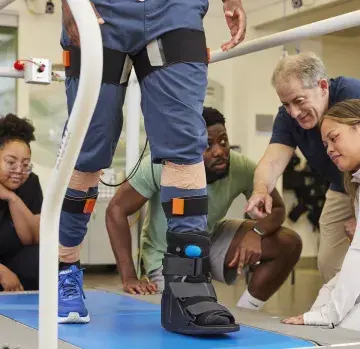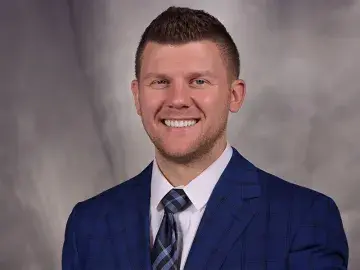New Beginning

On Jan. 1, the University became independent after being an affiliate of Sutter Health since 1999. We asked SMU President Ching-Hua Wang to tell us why the University chose to become independent and what this landmark decision means going forward.
How did Independence come about?
A Sutter Health executive told me in April that Sarah Krevans, then Sutter’s CEO, had endorsed our desire for independence—something Sutter previously resisted. From April to December 2021, there was a tremendous amount of work carried out by SMU’s Disaffiliation Leadership Team, effectively led and coordinated by our new Executive Vice President and Treasurer Dave
Lawlor and strongly supported by the Board of Regents. Though our official independence date was Jan. 1 of this year, we’re still unwinding our shared business services and expect to have that completed this summer.
I want to note, though, that SMU is maintaining its long relationship with Sutter for clinical placements for our students. And, of course, many of our graduates go on to work for Sutter.
Why is independence good for SMU?
Sutter and SMU have two distinctive missions. Sutter is focused on healthcare delivery. SMU is focused on health sciences education.
With this independence, we can more freely pursue our new campus in downtown Oakland. We are also able to shape our own future and enhance our reputation to reach our vision to become nationally recognized as a premier comprehensive health sciences institution.
Independence from Sutter allows SMU to remove layers of bureaucracy and enables us to act strategically and function nimbly in response to the significant need for workforce development amongst healthcare professionals. It allows us to pursue corporate partnerships and fundraise freely. We can unlock our potential by expanding our academic programs strategically and growing our enrollment to meet the needs of the diverse communities we serve.
How does this impact SMU’s pursuit of a new campus?
Our independence has produced a positive impact on our efforts for a new campus. We have identified a site in downtown Oakland and are going through the city’s approval processes. According to our timeline, we plan to break ground in mid-2023 and move in by the end of 2025. Currently, we’re reach- ing out to potential donors and community groups to garner support for this much-needed facility for our students and the people of Oakland, Northern California, and the Central Valley. Remember, we are the second-largest producer of nursing graduates among non-profit universities in the state. A new campus, new academic degree programs, and a state-of-the-art simulation center will help us graduate diverse healthcare providers that will support underserved communities.
Can you tell us about the new academic programs you mentioned?
We’re already making great progress here, having launched a Public Health Certificate program last year. This fall we’ll launch a Psychiatric Mental Health—Doctor of Nursing Practice program and expand SMU’s RN to BSN program at our Oakland and Fresno campuses. We’re considering new academic programs in midwifery, kinesiology, medical social work, and nurse leadership by 2023.
What will the University look like in five years?
We have developed an ambitious, but, we think, realistic student enrollment growth plan that has our student population doubling in the next 10 years. Our new campus would help to facilitate that. There’s a tremendous opportunity for SMU to play a significant role in workforce development for the health sciences even beyond patient care. Health data analytics is an emerging field that we’re also exploring, so we see tremendous growth opportunities. And we are looking to under- take more research in the coming years. We have not been known as a research institution, though we’ve had many faculty and students undertake and participate in important and life-changing research projects.
Our growth is designed to meet the needs of our communities and to provide opportunities for people of diverse backgrounds to enter the health sciences workforce. Given our long history in health sciences, we feel that we can make a positive difference in the health and well-being of people throughout California and beyond.


